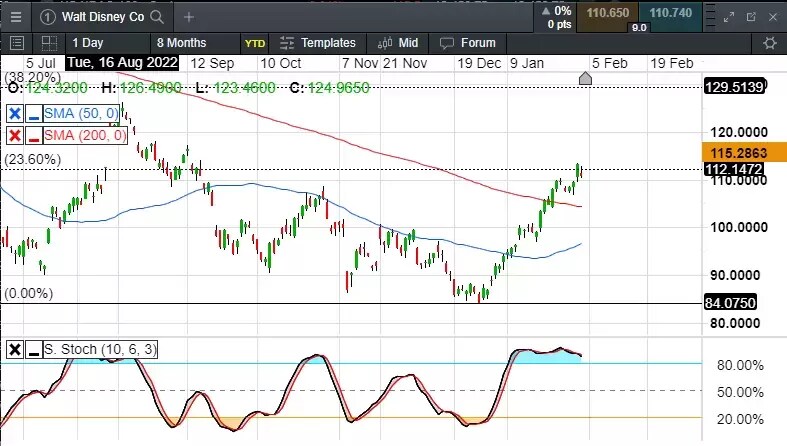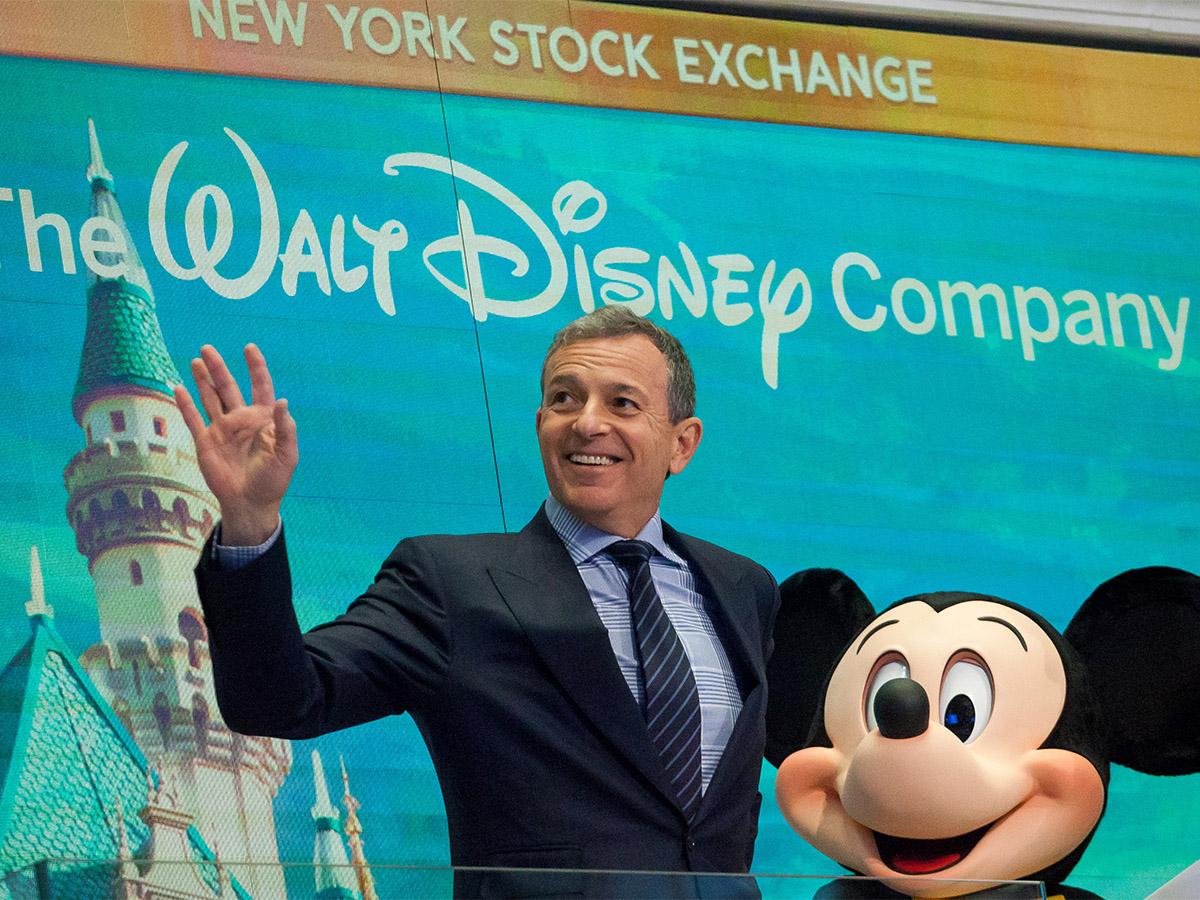The Walt Disney Co [DIS] share price has risen by more than 30% since December, amid renewed optimism among investors that streaming services still have room to grow.
In Disney’s fourth quarter, which covered the three months to 1 October, the company added 12.1 million Disney+ subscribers, beating analyst forecasts of 9.4 million and bringing the total number of subscribers to 164.2 million. Subscriber gains are again likely to be an area of focus when the company reports Q1 results after US markets close on Wednesday.
Disney shares shed pandemic-era gains
In December Disney's share price slipped to its lowest level since the onset of the coronavirus pandemic in March 2020.
The stock sank after the company reported in November that Q4 revenue came in at a lower-than-expected $20.15bn, up 9% versus the year-ago quarter. Earnings per share came in at $0.30, missing analysts’ expectations of $0.53.
New-year bounce
Since that low-point in December, the stock has rallied. The Disney share price reached $110.71 at the close on Friday 3 February, up 31.7% from the 33-month low of $84.07 that they hit on 28 December. The S&P 500 rose 9.3% over the same period.
Still, Disney’s stock remains well below the all-time high of around $200 set in March 2021, when the pandemic led to increased demand for online streaming services such as Disney+ and rival Netflix [NFLX]. Incidentally, shares of Netflix are up more than 23% so far this year, driven by strong Q4 results which showed the company added 7.7 million paid subscribers in the last three months of 2022, smashing analysts’ expectations of 4.6 million.
Our chief market analyst, Michael Hewson, reckons that Disney shares have staged a decent recovery off the December lows, but could soon run into a period of volatility. “With the shares now above the 50- and 200-day simple moving averages, momentum appears to point to further gains,” said Hewson, with reference to the chart below.
“The August 2022 highs at $124 are the next target, but we could see some weakness down towards support at $100, given that the market currently looks overbought,” he added.
Disney price chart, July 2022 to present

Subscriber gains came at a high price
Although Disney added 12.1 million Disney+ customers in Q4, the platform incurred a loss of $1.5bn during the quarter.
Chief executive Bob Iger – who in November returned for a second spell in charge of Disney, having previously served as CEO from 2005 to 2020 – is apparently keen to restructure Disney’s film and TV operations, which may be just as well since activist investor Nelson Peltz has called for Disney to get a handle on costs.
Analysts offer upbeat assessment
Analysts appear bullish on Disney’s prospects. Revenue in Q1 is estimated to have grown 6.9% year-on-year to $23.3bn according to consensus estimates compiled by Zacks Investment Research, with per-share earnings expected to rise to $0.69, up from $0.30 last quarter.
Meanwhile, data collected by the Financial Times in February shows that, among a group of 30 analysts, seven analysts rated the shares a ‘buy’, 17 ranked them ‘outperform’, and six considered them a ‘hold’. There were no ‘underperform’ or ‘sell’ ratings in the sample. Moreover, of the 28 analysts offering a 12-month price target for Disney shares, the median estimate of $120 represents an 8.4% increase from Friday’s closing price of $110.71. The high estimate of $229 implies a 106.8% increase versus that closing price, while the low estimate of $94 would entail a 15.1% decrease.
First, though, for Disney shares to maintain their upward momentum, the company must show that it can expand its Disney+ subscriber base without running up huge losses. Subscriber numbers and the company’s long-term strategy are therefore likely to be front and centre when Disney announces its Q1 earnings after US markets close on Wednesday 8 February.
Disclaimer: CMC Markets is an execution-only service provider. The material (whether or not it states any opinions) is for general information purposes only, and does not take into account your personal circumstances or objectives. Nothing in this material is (or should be considered to be) financial, investment or other advice on which reliance should be placed. No opinion given in the material constitutes a recommendation by CMC Markets or the author that any particular investment, security, transaction or investment strategy is suitable for any specific person. The material has not been prepared in accordance with legal requirements designed to promote the independence of investment research. Although we are not specifically prevented from dealing before providing this material, we do not seek to take advantage of the material prior to its dissemination.




